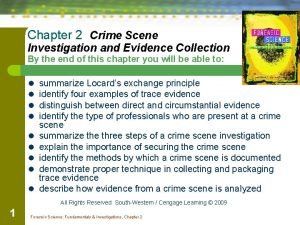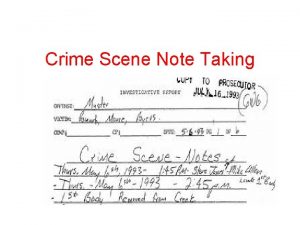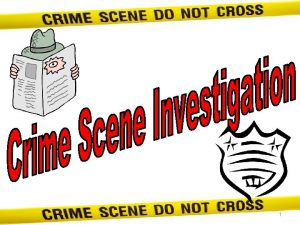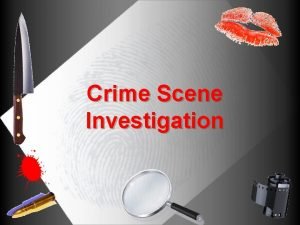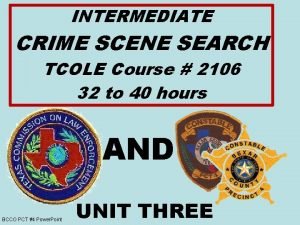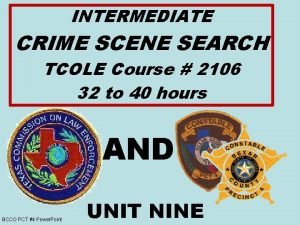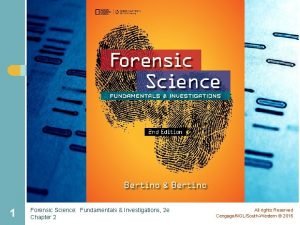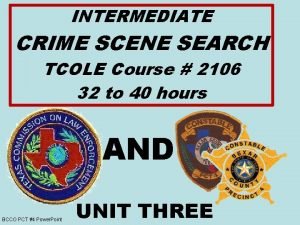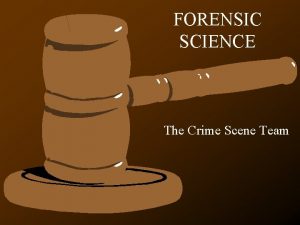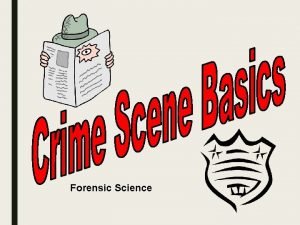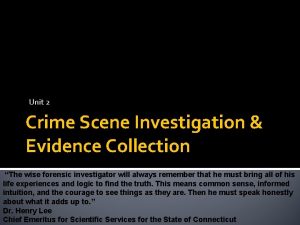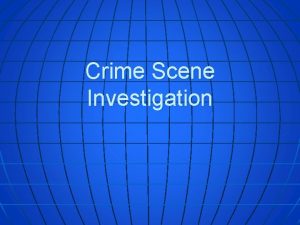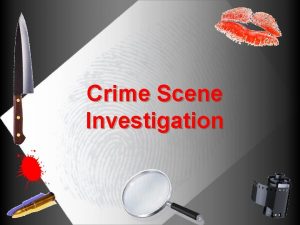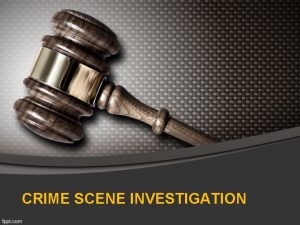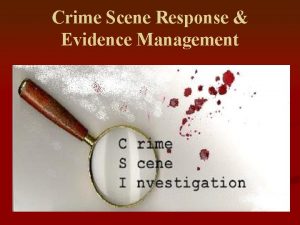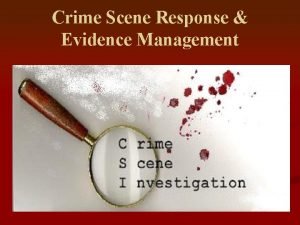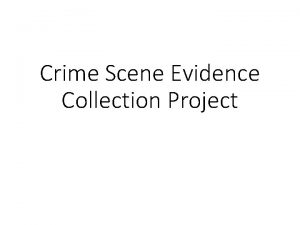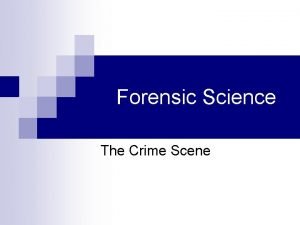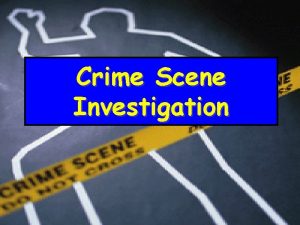Crime Scene Investigation Evidence Collection Lessons from the













- Slides: 13

Crime Scene Investigation & Evidence Collection

Lessons from the Jon. Benet Ramsey Case ► In 1996, six year-old Jon. Benet Ramsey was found murdered in the basement of her home. ► This crime scene reveals how important it is for crime scene investigators to secure a crime scene immediately or valuable information may be lost forever. ► To this day, the case remains unsolved.

Goal of Crime Scene Investigation ► Recognize, ► The document and collect evidence collected at a crime scene is all investigators have to go on to recreate a picture of what happened at the scene.

Principle of Exchange ► First described by Dr. Edmond Locard (sometimes called Locard’s Exchange Principle) ► Defined as the physical transfer of materials such as hair, fibers, blood, and skin cells when two people come in contact with each other ► The longer (or more intense) the contact, the greater amount of trace evidence

Types of Trace Evidence ► Animal or human hair ► Fingerprints ► Soil or plant material (pollen) ► Body fluids (mucus, semen, saliva, blood) ► Fiber or debris from clothing ► Paint chips, broken glass, chemicals (drugs, explosives)

Types of Evidence ► Direct evidence – includes firsthand observations, such as eyewitness accounts or police dashboard video cameras and confessions ► Circumstantial evidence – indirect evidence that can be used to imply a fact, but does not directly prove it - provides a link between a crime scene and a suspect

Circumstantial Evidence ► Can be physical or biological ► Physical evidence– includes fiber, weapons, bullets, and shell casings § Reduces the number of suspects to a specific smaller group of individuals ► Biological evidence – includes body fluids, hair, plant parts, and natural fibers § Makes the group of suspects very small, or reduces it to a likely individual § More persuasive in court

Class Evidence vs. Individual Evidence ► Class evidence – narrows an identity to a group of persons or things (ex. ; blood type) ► Individual evidence – narrows an identity to a single person or thing (ex. ; fingerprints)

Crime Scene Investigative Team ► Police officers ► District attorney ► Crime scene investigators, including recorders, sketch artists, photographers, evidence collectors ► Medical examiners ► Detectives ► Specialists (entymologist, forensic psychologist, toxicologist)

Analysis of Evidence ► Forensic labs process the evidence and send the results to the lead detective ► Unlike CSI, lab techs are specialized and only process one type of evidence ► Test results lead to crime scene reconstruction

Crime Scene Reconstruction ► Involves forming a hypothesis of the sequence of events from before the crime was committed through its commission. ► Investigators look at evidence and attempt to determine how it fits into the overall crime scenario.

Staged Crime Scenes ► Create problems for investigators because the evidence does not match witness testimony ► Examples of staged crime scenes § Arson § Suicide/murder § burglary

Procedure to Use if Staged Scene is Suspected Initially treat all deaths as homicides ► Do the type of wounds match the weapon used ► Could the wounds be self-inflicted? ► Establish a profile of the victim through family and friends ► Evaluate behavior of victim prior to the event ► Evaluate behavior of suspects prior to the event ► Corroborate statements with evidential facts ► Reconstruct the event ► Conduct forensic examinations ►
 Summarize locard's principle of exchange
Summarize locard's principle of exchange Crime scene note taking
Crime scene note taking Crime scene investigation vocabulary
Crime scene investigation vocabulary Line/strip search pattern
Line/strip search pattern 2106 crime scene investigation
2106 crime scene investigation 7 s's of a crime scene
7 s's of a crime scene Tcole 2106
Tcole 2106 The seven s's of crime scene investigation definition
The seven s's of crime scene investigation definition 2106 crime scene investigation
2106 crime scene investigation Rough sketch vs final sketch crime scene
Rough sketch vs final sketch crime scene Intermediate crime scene investigation texas
Intermediate crime scene investigation texas Crime scene investigation vocabulary
Crime scene investigation vocabulary Crime scene investigation background
Crime scene investigation background Seven s's of crime scene investigation
Seven s's of crime scene investigation
